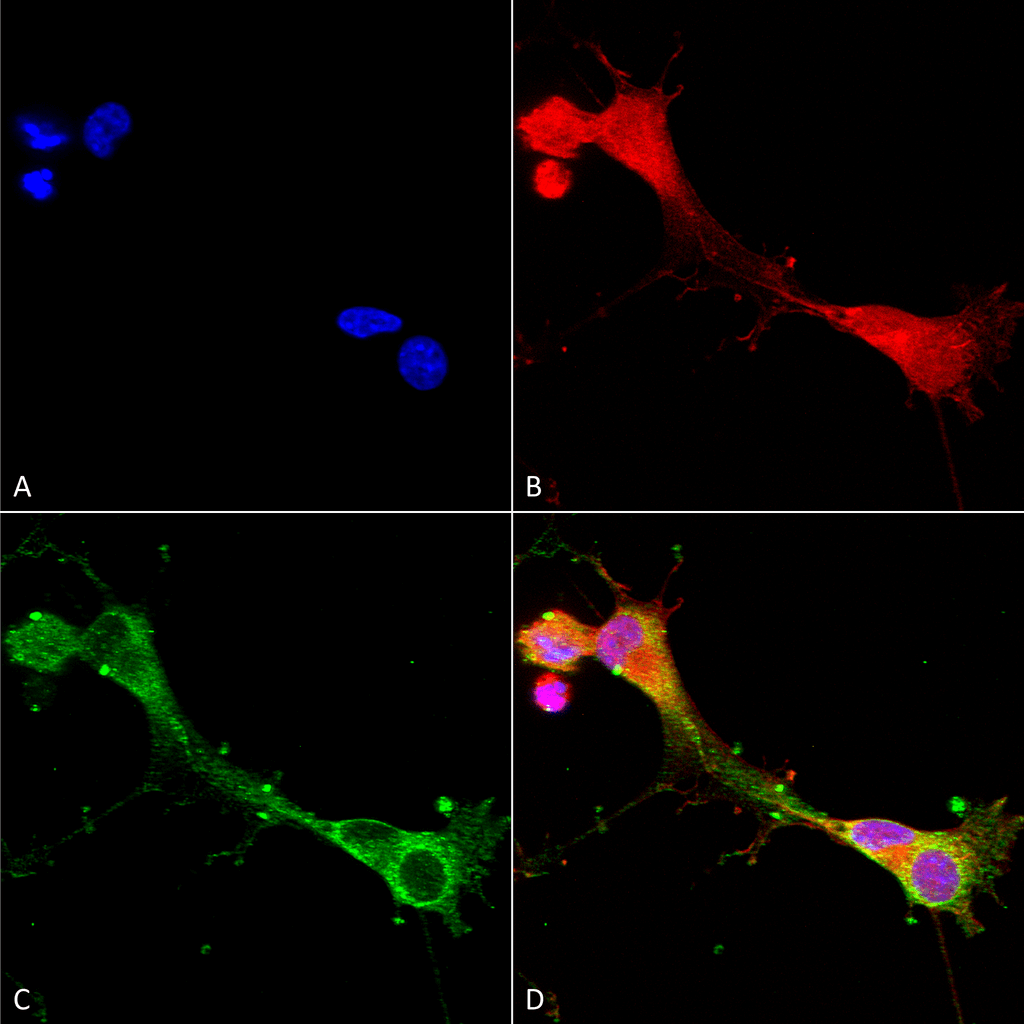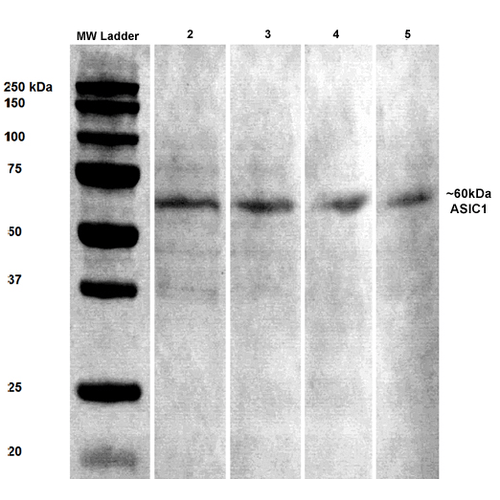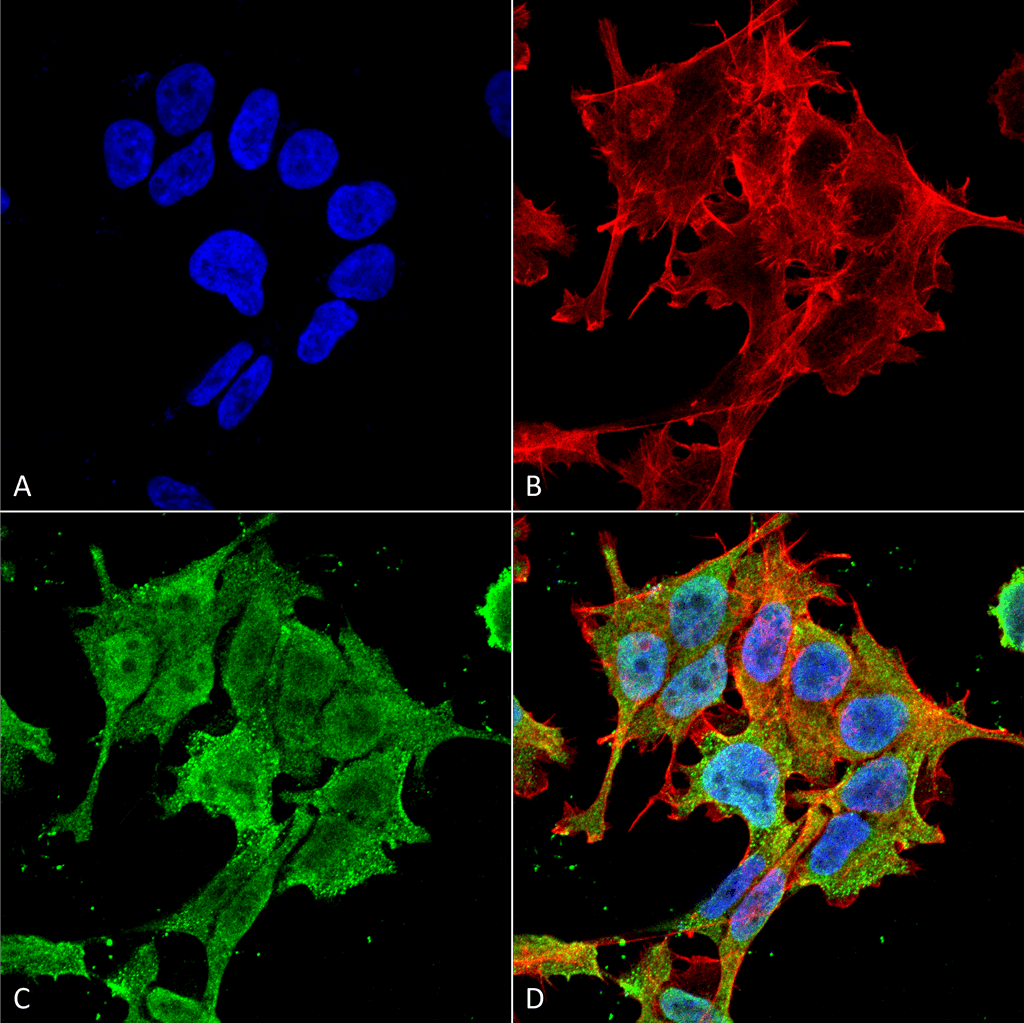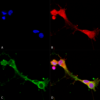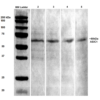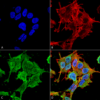Anti-ASIC1 Antibody (11573)
$466.00
SKU: 11573
Categories: Antibody Products, Ion Channel Antibodies, Products
Overview
Product Name Anti-ASIC1 Antibody (11573)
Description Anti-AISC1 Mouse Monoclonal Antibody
Target ASIC1
Species Reactivity Mouse, Rat
Applications WB,IHC,ICC/IF
Host Mouse
Clonality Monoclonal
Clone ID S271-44
Isotype IgG1
Immunogen Fusion protein corresponding to aa 460-526 (cytoplasmic C-terminus) of mouse ASIC1 (accession no. Q6NXK8).
Properties
Form Liquid
Concentration Lot Specific
Formulation PBS, pH 7.4; 50% glycerol, 0.09% sodium azide.
Buffer Formulation Phosphate Buffered Saline
Buffer pH pH 7.4
Buffer Anti-Microbial 0.09% Sodium Azide
Buffer Cryopreservative 50% Glycerol
Format Purified
Purification Purified by Protein G affinity chromatography
Specificity Information
Specificity This antibody recognizes mouse and rat ASIC1. It does not cross-react with ASIC2.
Target Name Acid-sensing ion channel 1
Target ID ASIC1
Uniprot ID Q6NXK8
Alternative Names ASIC1, Acid-sensing ion channel, Amiloride-sensitive cation channel 2, neuronal, Brain sodium channel 2, BNaC2
Gene Name Asic1
Accession Number NP_033727.1
Sequence Location Cell membrane
Biological Function Proton-gated sodium channel; it is activated by a drop of the extracellular pH and then bPubMed:11988176, PubMed:12843249, PubMed:15369669, PubMed:15578512, PubMed:17060608, PubMed:17662962}.
Research Areas Ion Channels
Background Acid sensing (proton-gated) ion channel 1 (ASIC1) is a cation channel with high affinity for sodium which is gated by extracellular protons and inhibited by the diuretic amiloride. It is also permeable for Ca(2+), Li(+) and K(+) and mediates glutamate-independent Ca(2+) entry into neurons upon acidosis. This Ca(2+) overloading is toxic for cortical neurons and may be in part responsible for ischemic brain injury. ASIC1 functions as a postsynaptic proton receptor that influences intracellular Ca(2+) concentration and calmodulin- dependent protein kinase II phosphory- lation.
Application Images




Description Immunocytochemistry/Immunofluorescence analysis using Mouse Anti-ASIC1 Monoclonal Antibody, Clone S271-44 (11573). Tissue: Neuroblastoma cells (SH-SY5Y). Species: Human. Fixation: 4% PFA for 15 min. Primary Antibody: Mouse Anti-ASIC1 Monoclonal Antibody (11573) at 1:100 for overnight at 4°C with slow rocking. Secondary Antibody: AlexaFluor 488 at 1:1000 for 1 hour at RT. Counterstain: Phalloidin-iFluor 647 (red) F-Actin stain; Hoechst (blue) nuclear stain at 1:800, 1.6mM for 20 min at RT. (A) Hoechst (blue) nuclear stain. (B) Phalloidin-iFluor 647 (red) F-Actin stain. (C) ASIC1 Antibody (D) Composite.

Description Western Blot analysis of Rat brain lysates showing detection of ASIC1 protein using Mouse Anti-ASIC1 Monoclonal Antibody, Clone S271-44 (11573). Primary Antibody: Mouse Anti-ASIC1 Monoclonal Antibody (11573) at 1:100, 1:250, 1:500, and 1:1000.

Description Immunocytochemistry/Immunofluorescence analysis using Mouse Anti-ASIC1 Monoclonal Antibody, Clone S271-44 (11573). Tissue: Neuroblastoma cell line (SK-N-BE). Species: Human. Fixation: 4% Formaldehyde for 15 min at RT. Primary Antibody: Mouse Anti-ASIC1 Monoclonal Antibody (11573) at 1:100 for 60 min at RT. Secondary Antibody: Goat Anti-Mouse ATTO 488 at 1:100 for 60 min at RT. Counterstain: Phalloidin Texas Red F-Actin stain; DAPI (blue) nuclear stain at 1:1000, 1:5000 for 60min RT, 5min RT. Localization: Cell Membrane, Nucleus. Magnification: 60X. (A) DAPI (blue) nuclear stain. (B) Phalloidin Texas Red F-Actin stain. (C) ASIC1 Antibody. (D) Composite.
Handling
Storage This antibody is stable for at least one (1) year at -20°C.
Dilution Instructions Dilute in PBS or medium which is identical to that used in the assay system.
Application Instructions Immunoblotting: use at 1ug/mL. A band of ~60kDa is detected.
Positive control: Rat brain lysate.
These are recommended concentrations. User should determine optimal concentrations for their application.
Positive control: Rat brain lysate.
These are recommended concentrations. User should determine optimal concentrations for their application.
References & Data Sheet
Data Sheet  Download PDF Data Sheet
Download PDF Data Sheet
 Download PDF Data Sheet
Download PDF Data Sheet

